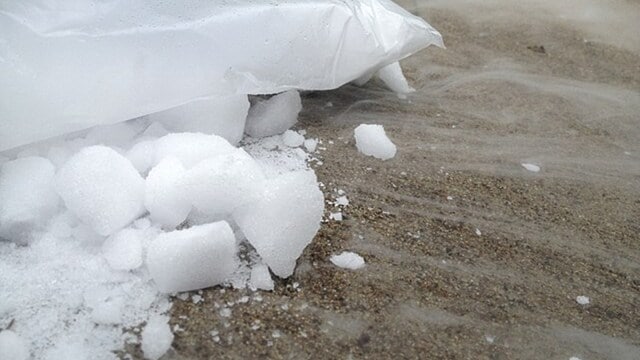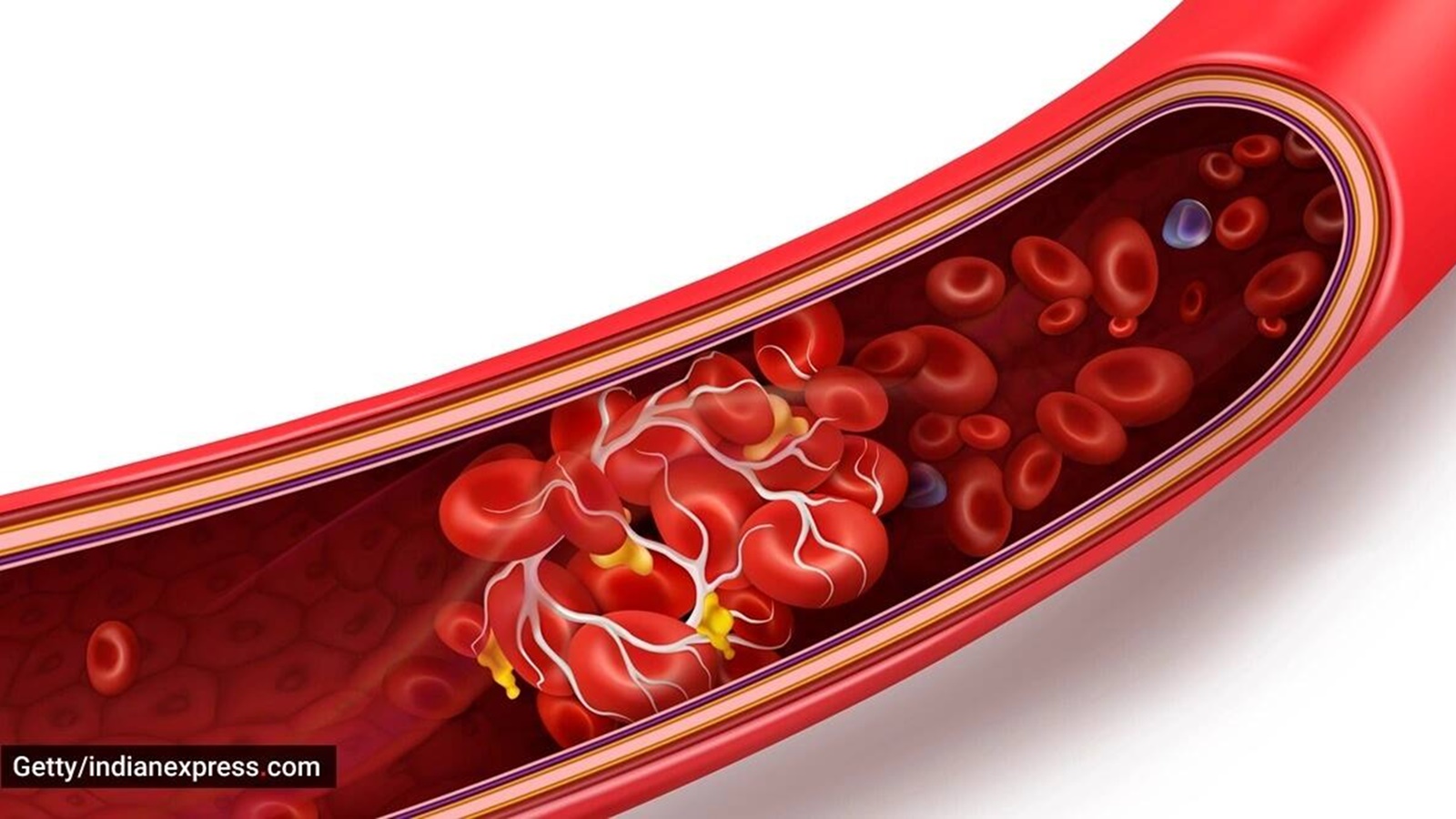- India
- International
What is dry ice and why did diners in Gurugram restaurant vomit blood after consuming it?
Inhaling large amounts of carbon dioxide gas that sublimates dry ice in a small area can cause dizziness and respiratory problems, said Dr Rajeev Gupta, director, internal medicine, CK Birla Hospital (R), Delhi
 Here's all you need to know about dry ice (Source: Wikimedia Commons)
Here's all you need to know about dry ice (Source: Wikimedia Commons)In a disturbing incident that recently came to light, dry ice was ‘mistakenly’ offered to a party of diners at a Gurugram restaurant in place of mouth freshener, which subsequently caused them to vomit blood. Dry ice is categorised as a lethal substance according to the Food Safety and Standards Authority of India (FSSAI). In fact, even the United States Food and Drug Administration (FDA), as well as the Centers for Disease Control and Prevention (CDC), advises against the use of dry ice with bare hands. “Always wear gloves designed for very cold temperatures and safety goggles,” reads the CDC site.
What is dry ice?
Dry ice is solid carbon dioxide at extremely low temperatures, around -78.5 degrees Celsius (-109.3 degrees Fahrenheit). “Due to its sublimation property, which enables it to transition straight from a solid to a gas without going through a liquid phase unlike regular ice, it is frequently used for freezing and cooling,” said Dr Rajeev Gupta, director, internal medicine, CK Birla Hospital (R), Delhi.
It serves various purposes across medical, food and beverage, and research sectors.
What are the associated health risks?
Dr Babina NM, chief medical officer, Jindal Naturecure Institute said that restaurants and bars frequently employ dry ice for both its dramatic vapour emission when serving certain dishes and its cooling properties.
While dry ice works well as a cooling agent, safety measures need to be followed. Carbon dioxide gas and extremely frigid temperatures can cause respiratory issues or skin injuries when improperly handled.

According to Dr Gupta, its low temperature may result in frostbite or cold burns when it comes into close contact with the skin.
In terms of health effects, the main concern with dry ice is the release of carbon dioxide gas. “When dry ice sublimates, it turns into carbon dioxide, which can displace oxygen in enclosed spaces. In areas with inadequate ventilation, the accumulation of carbon dioxide can lead to oxygen deficiency, posing a risk of asphyxiation,” described Dr Manjusha Agarwal, senior consultant, internal medicine, Global Hospitals parel Mumbai.
Inhaling large amounts of carbon dioxide gas that sublimates dry ice in a small area can cause dizziness and respiratory problems. “It’s crucial to use dry ice in well-ventilated areas and to handle it with insulated gloves or tongs to avoid skin contact,” said Dr Gupta.
Moreover, exposure to dry ice or its vapour can provoke eye irritation, manifesting as redness, tearing, and discomfort, said Dr Dipak Patade, consultant physician, Adhikari Lifeline Multispecialty Hospital, Palghar.
Swallowing dry ice is much more dangerous than holding it. “The dry ice can freeze tissue in your mouth, esophagus, and stomach,” said Dr Ranga Santosh Kumar, consultant physician, Yashoda Hospitals, Hyderabad.
Dr Kumar said that the biggest danger probably is when people try to “smoke” dry ice, where they put a tiny piece of dry ice in their mouths to blow a puff of smoke. “Although professional entertainers and teachers may perform this demonstration, there is a real risk of accidentally swallowing the piece of dry ice,” said Dr Kumar.
 Dry ice affects your body (representative) (Source: Getty Images/Thinkstock)
Dry ice affects your body (representative) (Source: Getty Images/Thinkstock)
To reduce health risks, always follow safety guidelines when working with dry ice.
Precautionary measures
There is a necessity for conscientious handling practices, comprehensive protective measures, and prioritising adequate ventilation during the utilisation or storage of dry ice indoors, said Dr Patade.
More Lifestyle
May 01: Latest News
- 01
- 02
- 03
- 04
- 05


























